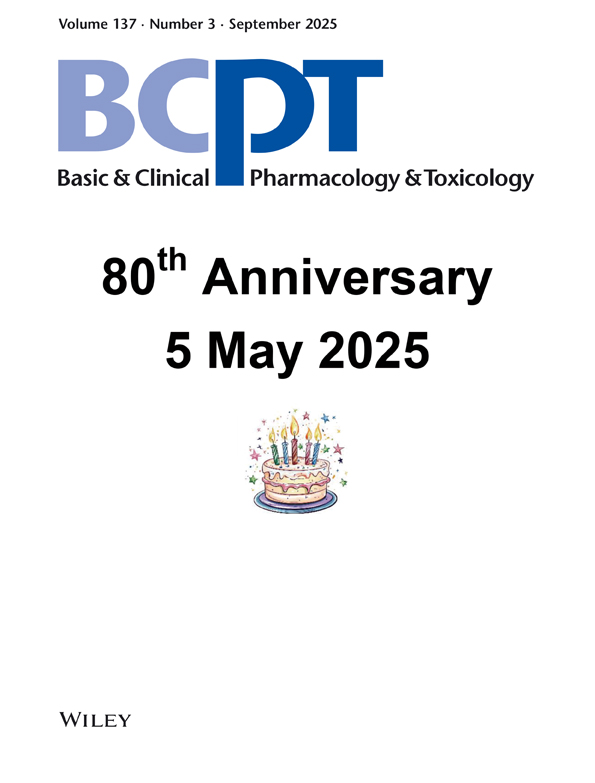Effects of Enzyme Induction on the Distribution of the Food Carcinogen 2-Amino-3,8-dimethyl-imidazo[4,5-f]-quinoxaline (MeIQx) in Ah-Receptor-Responsive- and Ah-Receptor-non-Responsive Mice
Abstract
Abstract The distribution of the food carcinogen 2-amino-3,8-dimethyl-imidazo[4,5-f]quinoxaline (MeIQx) was studied in Ah-responsive-(C57BL/6J) and Ah-non-responsive mice (DBA/2N). The time dependent organ distribution of radioactivity after 14C-MeIQx (10 mg/kg) administration in C57BL/6J showed that at day 4 most of the radioactivity had been excreted and that the remaining radioactivity was found in liver, kidneys, lungs and spleen. C57BL/6J bound more radioactivity in the kidneys than the DBA/2N strain whereas approximately the same amount was left in the liver and lungs in both strains 4 days after MeIQx exposure. Liver microsomes of the two strains had approximately the same ability to activate MeIQx in the Ames Salmonella assay. β-Naphthoflavone treatment of the animals greatly increased microsomal activating capacity, but only in the C57BL/6J strain. Isosafrole treatment of the animals only slightly increased the activating capacity, but particularly with microsomes from the DBA/2N strain, displacement of the putative inhibitory isosafrole metabolite greatly increased their activating capacity. In the whole animals pretreatment with β-naphthoflavone, which induces P450IA only in the C57BL/6J strain, did not significantly change the amount of retained radioactivity in any of the strains. Isosafrole induces only P450IA2, the major N2-hydroxylating enzyme of heterocyclic amines, in both strains. Such pretreatment reduced the amount retained in the kidney of both strains whereas it reduced the retained amount of radioactivity in the liver with about 60% only in the Ah-non-responsive strain (DBA/2N). The effect of isosafrole did not persist when MeIQx was given three days after the last injection. The results indicate that induction by β-naphthaflavone in the C57BL/6J mice increases P450IA dependent N2-hydroxylation. The lack of change in MeIQx binding may be due to enhancement also of detoxification, but more likely, the rate limiting step is the ultimate esterification of the N2-hydroxylamine derivative. With isosafrole, which induces only P450IA2 in both strains, the results indicate that an isosafrole metabolic product inhibits P450IA2 activity also in vivo. Treatment with phenethyl isothiocyanate which has been claimed to block the action of certain carcinogens, caused an increased binding of MeIQx in the liver and kidneys of C57BL/6J mice.




